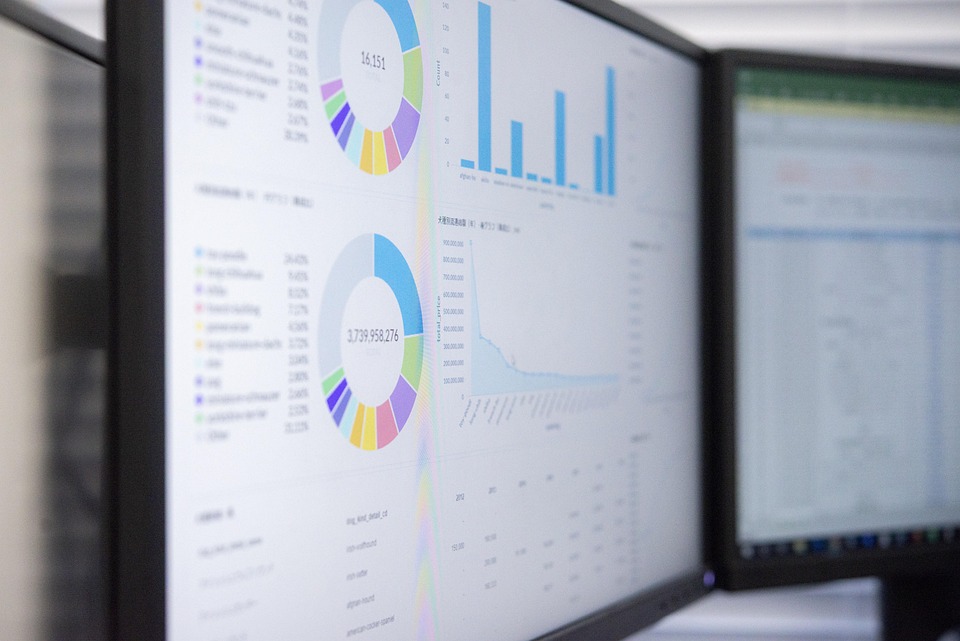How to Analyze Crypto Charts: A Beginner’s Guide to Technical Analysis in Cryptocurrency
Analyzing cryptocurrency charts is a vital skill for traders, investors, and enthusiasts seeking to make informed decisions in the highly volatile crypto market. Technical analysis involves studying price movements, volume, and historical patterns to predict future trends. While fundamental analysis focuses on a project’s intrinsic value, technical analysis is all about reading the "language" of the charts. Here’s a step-by-step guide to help you master the basics and advanced techniques of crypto chart analysis.
1. Understand the Basics of Crypto Charts
Crypto charts are visual representations of price data over time. Common chart types include:
- Line Charts: Show closing prices over a period, ideal for identifying overall trends.
- Bar Charts: Display open, high, low, and close prices for each time interval.
- Candlestick Charts: Provide the same data as bar charts but in a more visually intuitive format, with color-coded “candles” indicating price direction.
Key Elements to Watch
- Timeframes: Charts can be viewed on various timeframes (e.g., 1-hour, 4-hour, daily, weekly). Shorter timeframes are useful for day trading, while longer ones suit long-term investors.
- Price and Volume: Price tells the story of supply and demand, while volume indicates the strength of a trend. A rising price with high volume is a strong signal, whereas a steep drop with low volume might suggest weak selling pressure.
- Support and Resistance Levels: These are price levels where an asset tends to pause or reverse. Support is a floor where buyers step in, and resistance is a ceiling where sellers dominate.
2. Learn Key Technical Indicators
Indicators are tools that help interpret price data. Here are the most commonly used ones in crypto:
a. Moving Averages (MA)
- Simple Moving Average (SMA): Averages price over a specific period (e.g., 50-day or 200-day).
- Exponential Moving Average (EMA): Gives more weight to recent prices, making it more responsive to trends.
- Golden Cross & Death Cross: When a short-term EMA crosses above (golden cross) or below (death cross) a long-term EMA, it can signal bullish or bearish trends.
b. Relative Strength Index (RSI)
Measures overbought (above 70) or oversold (below 30) conditions. A drop below 30 might indicate a potential buying opportunity, while a rise above 70 could signal a sell-off.
c. MACD (Moving Average Convergence Divergence)
Compares two moving averages to identify momentum and trend changes. A bullish signal occurs when the MACD line crosses above the signal line, and a bearish signal when it crosses below.
d. Bollinger Bands
Show price volatility with upper and lower bands that expand or contract based on standard deviations. Prices near the upper band may suggest overbought conditions, while those near the lower band indicate oversold.
e. Fibonacci Retracement
Identifies potential reversal levels by drawing horizontal lines at key Fibonacci ratios (e.g., 38.2%, 50%, 61.8%). These help traders spot areas where price might bounce or stall.
3. Master Candlestick Patterns
Candlestick charts are popular in crypto because they reveal psychological market movements. Common patterns to watch:
- Doji: A neutral pattern where the opening and closing prices are nearly equal, signaling indecision.
- Hammer: A bullish reversal pattern with a long lower shadow and small body.
- Engulfing Pattern: A large candle that "engulfs" a smaller one, indicating a potential trend reversal.
- Bearish / Bullish Stars: Patterns like the Morning Star (bullish) or Evening Star (bearish) often precede trend changes.
- Cup and Handle: A bullish pattern resembling a cup followed by a handle, suggesting a potential breakout.
Pro Tip: Combine candlestick patterns with other indicators (e.g., RSI or volume) to confirm signals. A doji alone may not be reliable without supporting data.
4. Identify Trends and Patterns
Cryptocurrencies often move in trends, which can be upward (bullish), downward (bearish), or sideways (rangebound).
- Uptrend: Higher highs and higher lows.
- Downtrend: Lower highs and lower lows.
- Sideways Trend: Price fluctuates within a range without a clear direction.
Use trendlines and channel lines to visualize these patterns. For example, Bitcoin’s 2020–2021 bull run saw a consistent upward trend with key resistance levels forming at $50,000 and $60,000.
5. Analyze Volume and Market Sentiment
Volume is a critical factor in confirming price movements:
- High Volume with Price Gains: Suggests strong buyer interest.
- Low Volume with Price Drops: May indicate a weak sell-off or a potential bounce.
Look for volume spikes during significant news events or breakouts. For instance, a sudden surge in Ethereum’s volume during a price rally might confirm a sustainable trend.
Market sentiment can also be gauged through tools like the Santanu Dhanraj’s Fear & Greed Index or social media trends, but technical analysis tools like on-balance volume (OBV) or volume profile provide more concrete data.
6. Use Chart Patterns for Strategy
Beyond candlesticks, certain chart formations can predict price movements:
- Head and Shoulders: A bearish reversal pattern with three peaks.
- Double Tops/Bottoms: Reflects a price testing a level twice before reversing.
- Triangles: Symmetrical, ascending, or descending triangles indicate consolidation before a breakout.
For example, during a bull run, Bitcoin might form a descending triangle, suggesting a potential breakout above resistance.
7. Apply Risk Management Techniques
Technical analysis isn’t foolproof, so always pair it with discipline:
- Set Stop-Loss Orders: Use support levels as stop-loss targets to limit losses.
- Calculate Take-Profit Targets: Use resistance levels or Fibonacci targets to lock in gains.
- Avoid Overtrading: Don’t act on every signal. Wait for strong setups with multiple indicators aligning.
8. Leverage Tools and Platforms
Use platforms like TradingView, CoinMarketCap, or Binance to access advanced charting tools:
- Drawing Tools: Use trendlines, Fibonacci retracements, and channels.
- Customizable Indicators: Add or remove tools like RSI, MACD, or volume profiles.
- Backtesting: Test strategies on historical data to see how they would have performed.
9. Combine Technical and Fundamental Analysis
While technical analysis focuses on price action, fundamental analysis (e.g., project roadmap, adoption rates, team quality) can supplement your strategy. For example, a technical bullish pattern might be validated by a new partnership announcement or regulatory approval.
10. Stay Updated and Practice
The crypto market is fast-moving and often influenced by external factors (e.g., macroeconomic events, regulatory changes). Regularly update your charts and practice on demo accounts or small trades before committing real money.
Common Mistakes to Avoid
- Over-reliance on a single indicator: Use multiple tools to cross-verify signals.
- Ignoring market context: Always consider news, adoption, and macroeconomic factors.
- Chasing volatility: High volatility can be risky; focus on patterns and trends, not just price swings.
Conclusion
Analyzing crypto charts is both an art and a science. By understanding indicators, patterns, and volume, you can uncover opportunities and manage risks more effectively. However, remember that no method is foolproof—always stay informed, practice patience, and adapt to market changes. As you gain experience, you’ll develop your own "style" of analysis, combining tools and intuition to navigate the exciting world of cryptocurrency.
Final Tip: Start with free tools like TradingView, observe real-world examples (e.g., Bitcoin’s 2023 chart), and build a strategy that aligns with your goals. Whether you’re a day trader or a long-term investor, technical analysis remains a cornerstone of informed decision-making in crypto.
Happy analyzing, and may your charts guide you to success in the market!







